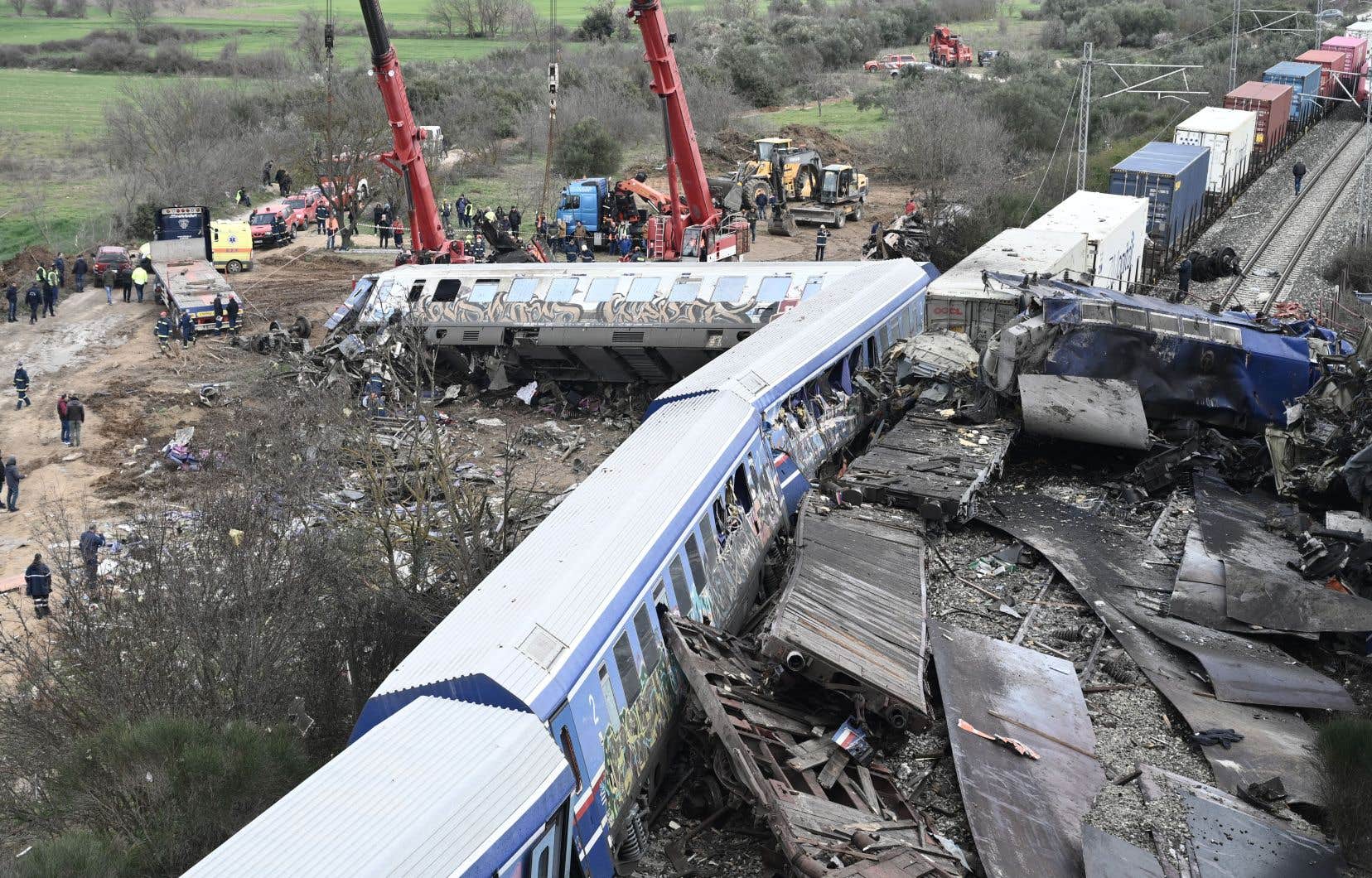Rescue operations are proving very difficult on Wednesday, the day after a head-on collision between two trains which left at least 36 dead and 85 injured in Greece, where voices were raised to denounce the lack of safety on this railway line .
The head of the station in Larissa, the town not far from where the tragedy took place, has been arrested, a police source told AFP.
For some unknown reason, the two trains had been traveling on the same track “for several kilometres”, said government spokesman Yiannis Oikonomou.
“The number of dead has risen to 36 at the moment,” said Vassilis Vathrakogiannis, the spokesman for the Greek fire brigade, during a brief press briefing, adding that the rescue operations to try to extricate passengers possibly still stuck in the wrecked wagons were still going.
“Sixty-six people have been hospitalized, six of whom are in intensive care,” he added, while a previous report reported 85 injuries in total, after a train with 342 passengers on board making the journey between Athens and Thessaloniki and a convoy of goods arriving in the opposite direction collided on Tuesday evening.
Under the violence of the impact, the locomotives and the leading wagons were pulverized and the drivers of two trains were killed instantly.
The president of the OSE train drivers’ union, Kostas Genidounias, who went to the scene of the tragedy, denounced the lack of security, according to him, on this line which connects the two main cities of Greece.
No security system
“All (signalling) is done manually. It is since the year 2000 that the systems do not work, “he got carried away on the television channel ERT.
Previously he had also assured AFP that “no security system, remote control and traffic light works”.
Contacted by AFP, the Italian public group Ferrovie di Stato (FS), which controls the Hellenic Train railway company, privatized in 2017, did not immediately comment.
Prime Minister Kyriakos Mitsotakis went there in the middle of the day and declared a three-day national mourning, promising that all light would be shed on the circumstances of this train accident presented as the worst that Greece has ever known.
“One thing I can guarantee is that we will find the cause of this tragedy,” he said.
Transport Minister Kostas Karamanlis, his voice strangled, called on his compatriots to “stay calm”.
Footage showed charred train cars in a tangle of metal parts and shattered windows. Other carriages, less damaged, lay on their side as rescuers used ladders to try to extricate survivors and two giant cranes to transport pieces of the train carcasses.
The collision occurred at the exit of a small tunnel over which passes a highway linking Athens to Thessaloniki.
The survivors became trapped in the compartments. “We broke the windows with our suitcases and got out,” said a young passenger to the Skaï television channel.
In Larissa, where the injured were transported, the mayor, Apostolos Kalogiannis, described “floods of ambulances bringing burns, amputees, everything you can imagine”.
“The work of firefighters and rescuers is very difficult, they are looking for […] the charred bodies,” explained Konstantinos Giannakopoulos, the president of the union of doctors of Larissa on the public television channel ERT.
” Earthquake “
Two huge cranes were installed to help clear the ground.
“We felt the collision like a great earthquake,” a passenger, Angelos, 22, told AFP at the scene of the accident.
“Fortunately, we were in the penultimate car and we got out alive. There was a fire in the first cars and panic ensued. It’s a nightmare that I lived […] I’m still shaking,” he continued.
Tuesday, shortly before midnight local time, several cars derailed at the Tempé Valley.
According to the Greek Minister of Health, Thanos Plevris, “most of the passengers were young people”. Many students were returning to Thessaloniki after a long weekend due to a public holiday in Greece.
Some 500 people are involved in the relief, said the government spokesman.
